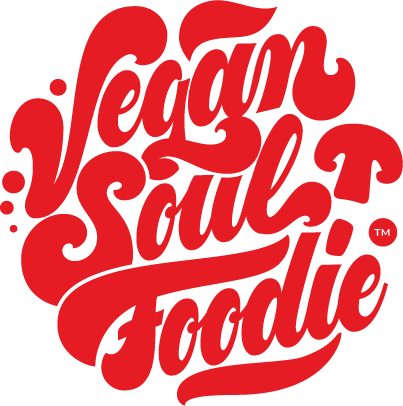How to make Soul Food Vegan Mac n’ Cheese
Glorious macaroni & cheese! A popular dish, that we’ve all gone back to get second servings. With French origins dating back to the 1700’s, this popular dish is now a staple in American cuisine. It’s become popularized, trendy even, in recent years, with chef’s adding their touch with truffles, fancy cheeses & even curry!
Now, like many foods, there’s more than one way to make mac & cheese. As well, there is much debate about the ‘right’ way to make this classic comfort food. Making it vegan is not different. There are many variations
Veganizing Mac ‘n Cheese
When it comes to ‘veganizing’ certain foods, it can be challenging to replicate certain flavors & textures. So, let’s talk about the components of this classic dish.
Consider the Noodles
The obvious place to start is with the noodles. The name of this dish may lead you to believe that macaroni noodles are the only way to go, but that is not necessarily true. Macaroni noodles are the perfect vehicle to carry a thick, creamy sauce, however, other styles of noodles like penne and my favourite, cavatappi will get the job done.
If you are looking for healthy options with high fiber, high protein, gluten-free and extra nutrients, consider chickpea noodles, whole wheat noodles, brown rice macaroni, or pea/lentil noodles. There are lots of noodle options outside or your basic white semolina flour choice.
They key here, is a firm noodle with some good surface area for a sauce to stick to. Another key is how you cook the pasta. Always salt your pasta water. This is not up for debate. Always, always season your pasta while it’s cooking. This is an extra layer of flavor that should not be overlooked. That said, once your pasta is cooked to your desired consistency, strain it and do not rinse. You want that remaining starch left on the noodles to help the sauce stick to them. The noodles are important but, not quite as important as the sauce. If you miss the mark on the sauce, be prepared to miss your next invite to the holiday dinner! Sorry, but this is not the time for weak sauce!
No Cheese, Vegan “cheesy” Sauce
Now, mac and cheese would not be what it is without the cheese, right? The short answer is yes, but with ‘veganizing’ traditional dishes, we have some flexibility here. One thing that is essential for a cream sauce, vegan or otherwise, is the fat content. Traditional mac and cheese is usually made with butter, cheese and heavy cream, all of which have a very high fat content. We are veganizing it and can replicate a very high fat animal product, while not compromising the dish and still providing that rich, tangy flavor of cheese.
Option #1: Tasty, cheesy, but not fatty
Let’s talk about some of the ingredients often used to make a vegan cheese sauce. Some folks like to go the veggie route of using potatoes, carrots, aromatics with a few other seasoning ingredients that will enhance the flavor. While this isn’t my first choice, it can be a healthier option than using packaged vegan cheeses. We know that this type of sauce can come through in the flavor department, but unfortunately it lacks the fat content required to truly replicate a creamy cheese sauce. No shade, just facts.
Option #2: Fatty nutty goodness…but allergies
The next option is a cashew-based sauce. This type of sauce has gained popularity as of late and is a great approach, because cashews are high in fat, but they are also quite expensive. Aside from the cost, nut allergies are a serious issue for some people, so make sure to consider this if you plan on sharing this dish with friends and family. Doing shots with friends and family in a social setting can be fun, but epipen shots are something that we should all steer clear of needing, ok?
Option #3: Vegan cheese products, close to real cheese, but processed
The next approach to a vegan cheese sauce is to use a plant-based milk and packaged vegan cheese products. There is nothing wrong with this but, it is definitely not the healthiest approach. Vegan cheeses can often contain undesirable ingredients like fillers and binders. These types of cheeses are often soy-based and highly processed and should be consumed in moderation.
Option #4: Full Fat, but it needs extra seasoning
So, as a classically trained chef, my approach to a vegan cheese sauce incorporates the traditional roux method and a high fat plant-based milk. For the roux, chickpea flour is a great option. It provides a nice hearty umami flavour and is a great binding agent and base for a thick creamy sauce. Considering that we need ingredients that have a high fat content, coconut cream is the perfect option, as is coconut milk. With a little extra care in the seasoning department, this method offers a rich, creamy cheese-like texture and full a punch of flavour, that may just have your non-vegan friends and family asking for the recipe!
Check out Brooke’s Butternut Squash Macaroni & cheese
Vegan Mac & Cheese
Serves 8-10
Ingredients
2 tbsp grapeseed oil
½ cup coconut cream
½ cup chickpea flour (add more to reach desired consistency)
2 cups full-fat coconut milk
10 ounces of dry pasta
1 ½ cups nutritional yeast
½ tsp turmeric powder
1 tsp garlic powder
1 tsp ground black pepper
1 tsp paprika
Sea salt to taste
Directions
Cook pasta in salted water, according to package instructions, strain and set aside. Do not rinse the pasta.
Heat grapeseed oil in a cast iron skillet over medium-high heat.
Add coconut cream and stir to break up any lumps.
Once coconut cream is melted, begin to add the chickpea flour, whisking as you go to incorporate the ingredients and form a roux or thick paste. Make sure to scrape the sides of the pan and incorporate all of the coconut cream & chickpea flour together
In a mixing bowl or large measuring cup whisk the dry ingredients together with the coconut milk, making sure to break up any lumps.
Begin to slowly add this mixture to the pan and whisk to incorporate.
Once all of the milk is added, continue to scrape down the sides of the pan and whisk until heated through. If the sauce is too thick, you may need to add some water until the desired consistency is reached.
Check your seasoning and adjust as needed.
Once the sauce is finished, add cooked pasta to the pan and toss to coat the pasta with the sauce.
Place the pan under the broiler for a few minutes until the top starts to brown. Rest the dish for 5 minutes & serve!





